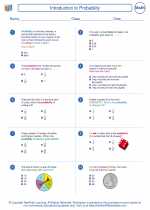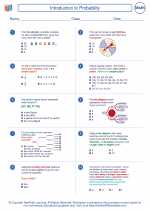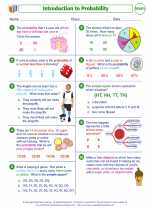Experimental Probability Study Guide
Experimental probability is the probability of an event occurring based on experimental results or observations. It is calculated by conducting an experiment or observation and recording the outcomes. The experimental probability of an event is calculated as the ratio of the number of favorable outcomes to the total number of outcomes observed.
Calculating Experimental Probability
To calculate the experimental probability of an event, use the following formula:
Experimental Probability = Number of Favorable Outcomes / Total Number of Outcomes
For example, if you roll a six-sided die 50 times and the number 3 comes up 10 times, the experimental probability of rolling a 3 would be 10/50 = 0.2 or 20%.
Study Guide
Here are some steps to follow when working with experimental probability:
- Conduct an experiment or observation to collect data on the outcomes of the event.
- Record the number of favorable outcomes (the outcomes that match the event you are interested in) and the total number of outcomes observed.
- Calculate the experimental probability using the formula: Experimental Probability = Number of Favorable Outcomes / Total Number of Outcomes
- Express the experimental probability as a fraction, decimal, or percentage, depending on the context of the problem.
- Interpret the experimental probability in the context of the problem and draw conclusions based on the results.
Example Problems
Let's work through some example problems to practice calculating experimental probability:
1. A coin is flipped 100 times and lands on heads 60 times. What is the experimental probability of the coin landing on heads?
Experimental Probability = 60/100 = 0.6 or 60%
2. A spinner is spun 50 times and lands on red 20 times. What is the experimental probability of the spinner landing on red?
Experimental Probability = 20/50 = 0.4 or 40%
Conclusion
Experimental probability provides a way to estimate the likelihood of an event occurring based on observed outcomes. By conducting experiments and recording results, we can calculate the experimental probability and make predictions about future outcomes.
.◂Math Worksheets and Study Guides Seventh Grade. Introduction to Probability

 Worksheet/Answer key
Worksheet/Answer key
 Worksheet/Answer key
Worksheet/Answer key
 Worksheet/Answer key
Worksheet/Answer key
 Worksheet/Answer key
Worksheet/Answer key
